Clean up and manage SharePoint content types and site columns

Table of contents
Looking to clear the clutter in your SharePoint environment? We explain the keys to a great SharePoint classification and two ways to manage SharePoint content types and site columns.
The beauty of content types is they group information about list items or documents that you want to capture using columns, helping to make things easier to find. But understanding what’s in your SharePoint sites and site collections can be a pain.
When site columns and site content types are created everywhere with different names, no description, and without any classification—SharePoint can quickly become a chaotic place.
As more data is produced faster than ever, IT faces a critical challenge: sprawl. Sprawl is likely to happen as users create resources they don’t need—something that’s too easy to do. Here are a few examples:
- A user creates a team or site for a department or project that already exists because they couldn’t find it.
- A user creates a team and then manually creates a SharePoint site to go along with it, not knowing that associated sites and Microsoft 365 Groups are automatically created when you create a new team.
- Every employee can create groups, either with or without a purpose — resulting in many unused groups.
Left unmanaged, sprawl can put company data security at risk and make finding resources more difficult for end users, slowing down productivity.
Here at ShareGate, we spent a lot of time exploring different options as part of the planning of our Microsoft 365 migration and governance solution. This article explains how you can manage content types and tidy up your site columns.
Groups and descriptions are the keys to a great SharePoint classification
There are different types of columns you can choose to create:
- Column: Created within a document library or list, can’t be reused somewhere else.
- Site column: Configurations are centralized and reusable across a site.
If you have a bunch of site columns that you frequently use together, you can create a content type.
Think of content types as metadata collections (columns) that define a content category. For example, you have a content type called Client Contract. This content type might include:
- Columns that represent an item of metadata, which can contain the names of various clients.
- A document template you want to apply that contains a text or description for each item of metadata.
Content types enable you to manage the settings for a category of information in a centralized, reusable way.
Whenever you add a content type to a document library, it automatically includes all the columns identified within that group. The value of the content type is that it allows you to have more than one type of content within the same document library, while still benefitting from column filtering.
Also, SharePoint metadata is the key to efficient searching. Learn how SharePoint folder hierarchy can promote productivity and collaboration.
Creating a site column or a content type is easy, so be careful!
Things to keep in mind:
- Make sure to put them into a specific group with a specific meaning.
- Next, add a description. It’ll help in the long run.
- And finally, if you specify them as required columns, you should add a default value.
You can group your columns and content types by purpose. A good example would be a “Conference Calendar” group. Adding a description is important, so other users can understand why the column or content type exists.
Reorganize your SharePoint content types and site columns
Let’s say you have new responsibilities and want to clean up the content types and columns found on your multiple sites. You’ve got a couple of options to tackle the job.
Option 1: Reorganize each content type and site column manually
To manage site content types:
- From the Site settings menu, select Site content types.
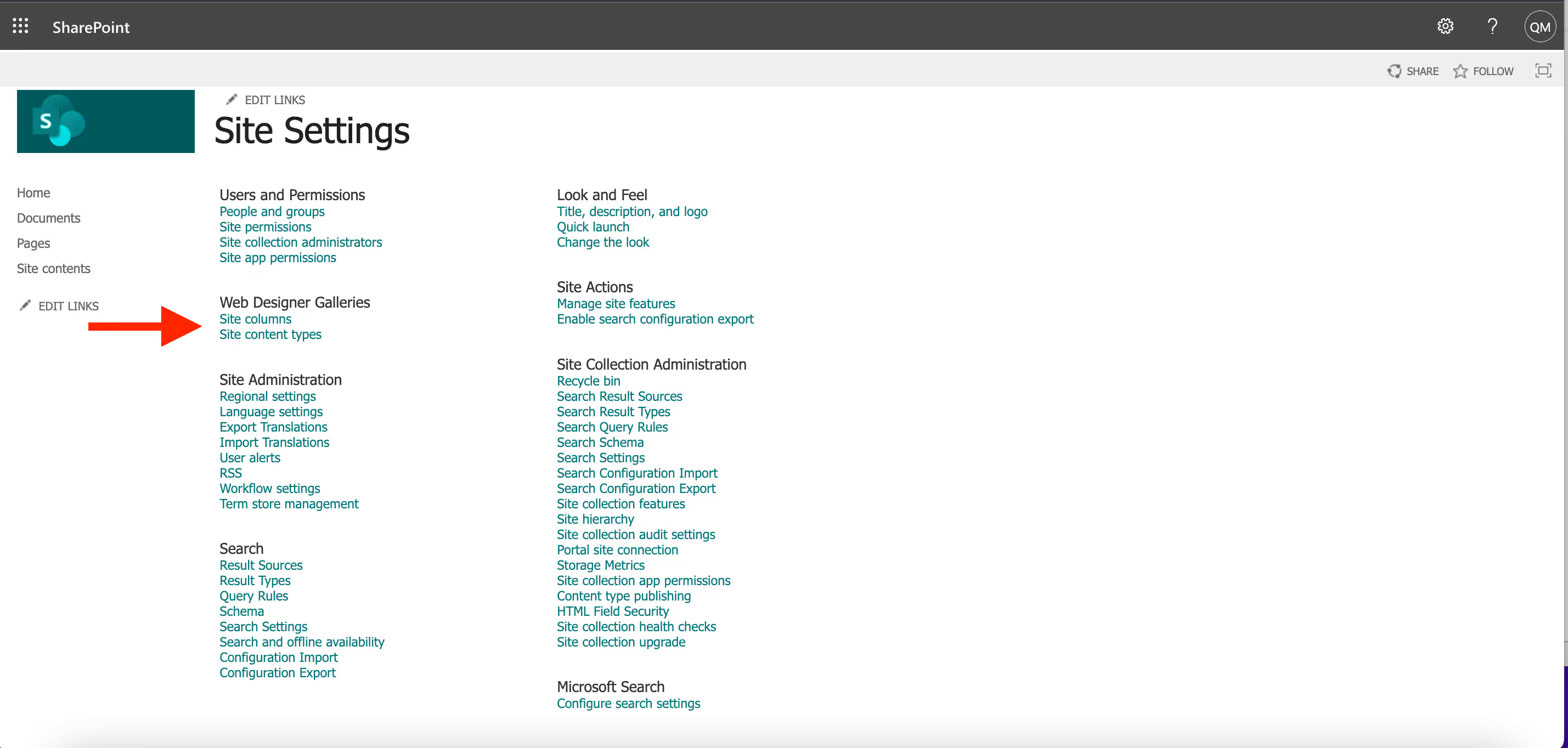
- The page shows all the existing site content types, grouped into categories. Select the name of the content type that you want to change.
- Click Edit on the information page for your selected site content type, then change the Name, Description, and Category.

To manage site columns:
- From the Site settings menu, select Site columns.
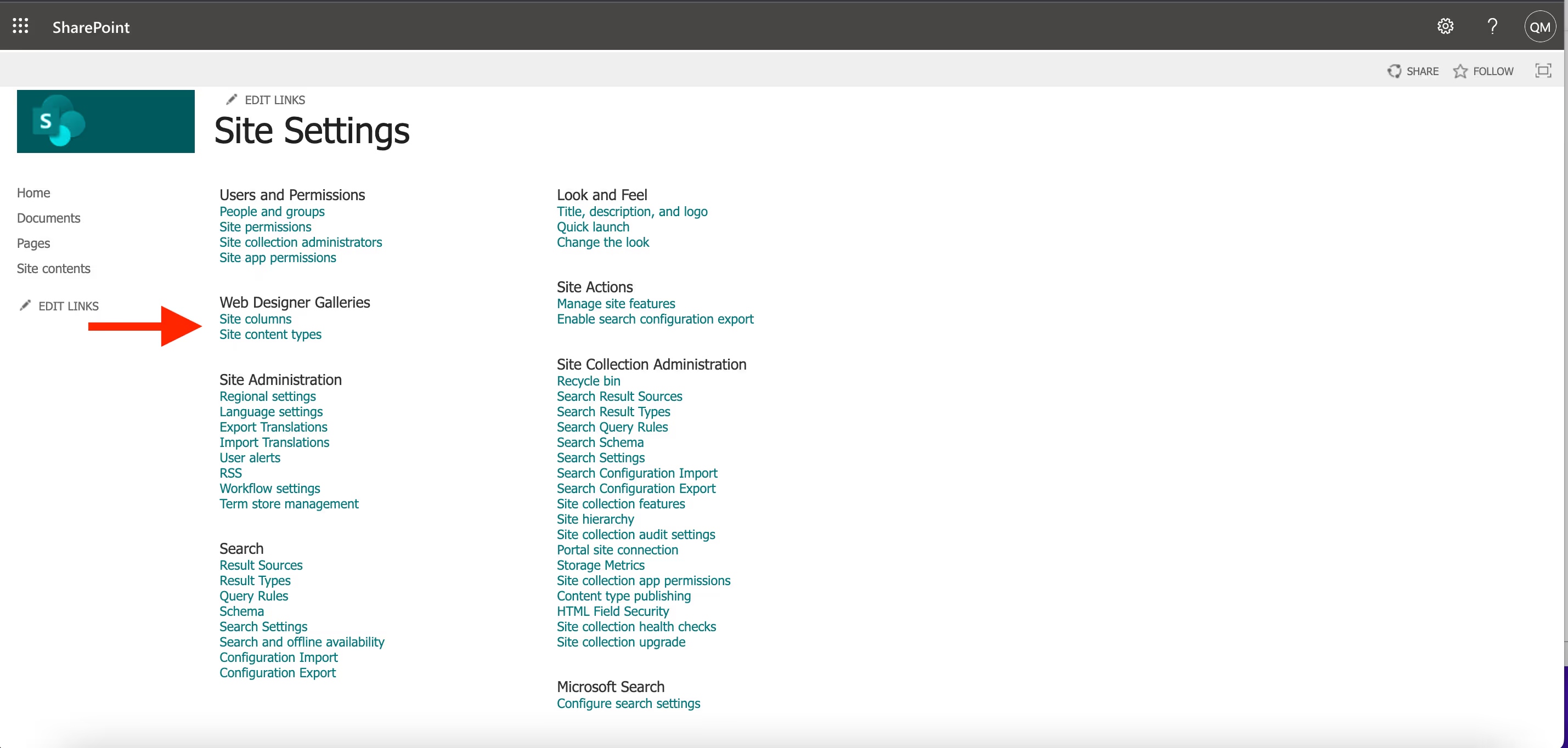
- You’ll see that there’s already a long page of column settings. These are the details of your existing columns. Find your site column and open it.
- Change the group and apply the one you want (or create a new one).
- Don’t forget to add additional useful information which will impact how the column can be used.
- Repeat this for each site column or content type.

Reorganizing content types and site columns manually is time-consuming using SharePoint site settings. You’ll need to repeat these steps for each content type and site column. You’re better off leaving all that work to ShareGate for quick and easy bulk SharePoint content management. 👇
Option 2: ShareGate
- Create a custom report from the Reporting feature in the ShareGate migration tool.

- Select List content type or List column.

- Then, specify the desired filters. For example, when you filter by groups that contain the word “custom,” you’ll find all the ungrouped custom site columns. You can also add the Group column to see the results.

- From the list of results, select one or multiple site columns (or content types) you’d like to manage, then click Edit.
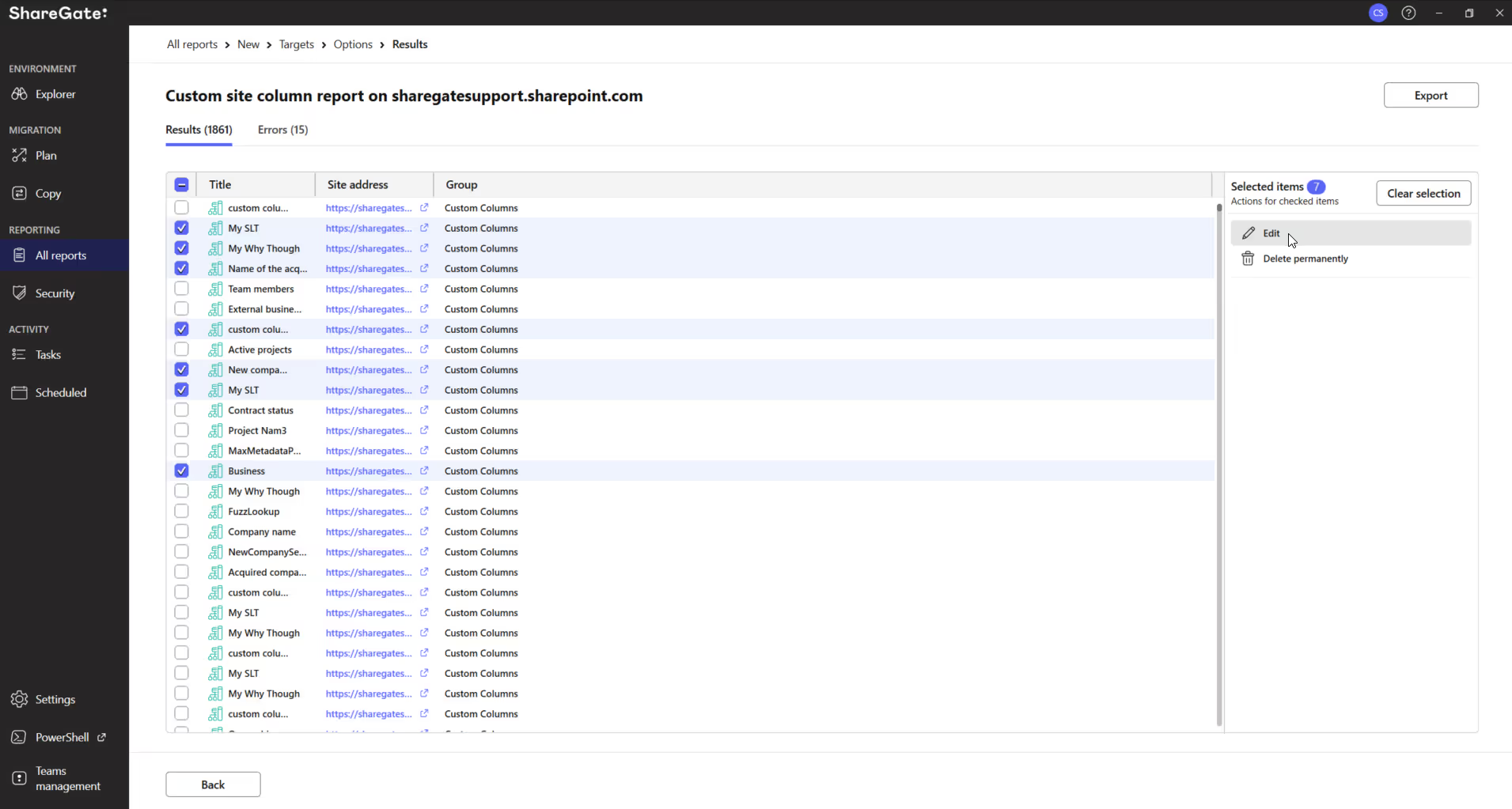
- Here you can change or add the group to a new one. To do this, select the “Group” action and type the name of the group you want to apply to the selected columns. You can type the name of an existing group or create a new one. Click Apply, and voilà!

Go further: Group hidden content types and add a description
Reorganizing your content types and site columns with ShareGate involves one simple step.
You can organize your content further by grouping hidden content types, so you and your users can see them. But be careful with hidden objects in SharePoint; changing them is not recommended. If they’re hidden, it’s for a good reason.
And remember when we said it’s important to add a description to your columns and content types? Well, you can do it directly from ShareGate, from the ‘Edit’ menu!

How to future-proof SharePoint content types and site columns management
No one likes tedious and repetitive tasks. But that’s often a big part of the job for IT teams.
Also, keeping things organized in your environment is hard if you don’t know what exists inside it and how it’s used. SharePoint reporting is crucial. But much of the information you need is scattered across multiple Microsoft 365 admin centers that don’t provide the actionable insights needed to pinpoint problems.
Manage and reorganize faster than ever
ShareGate’s Bulk Edit Content feature lets you quickly add metadata columns and content to classify your data better. You can map users and content types. And you can export your metadata to Excel and use the power of Excel to create transformation formulas or simply add columns to import back to ShareGate.
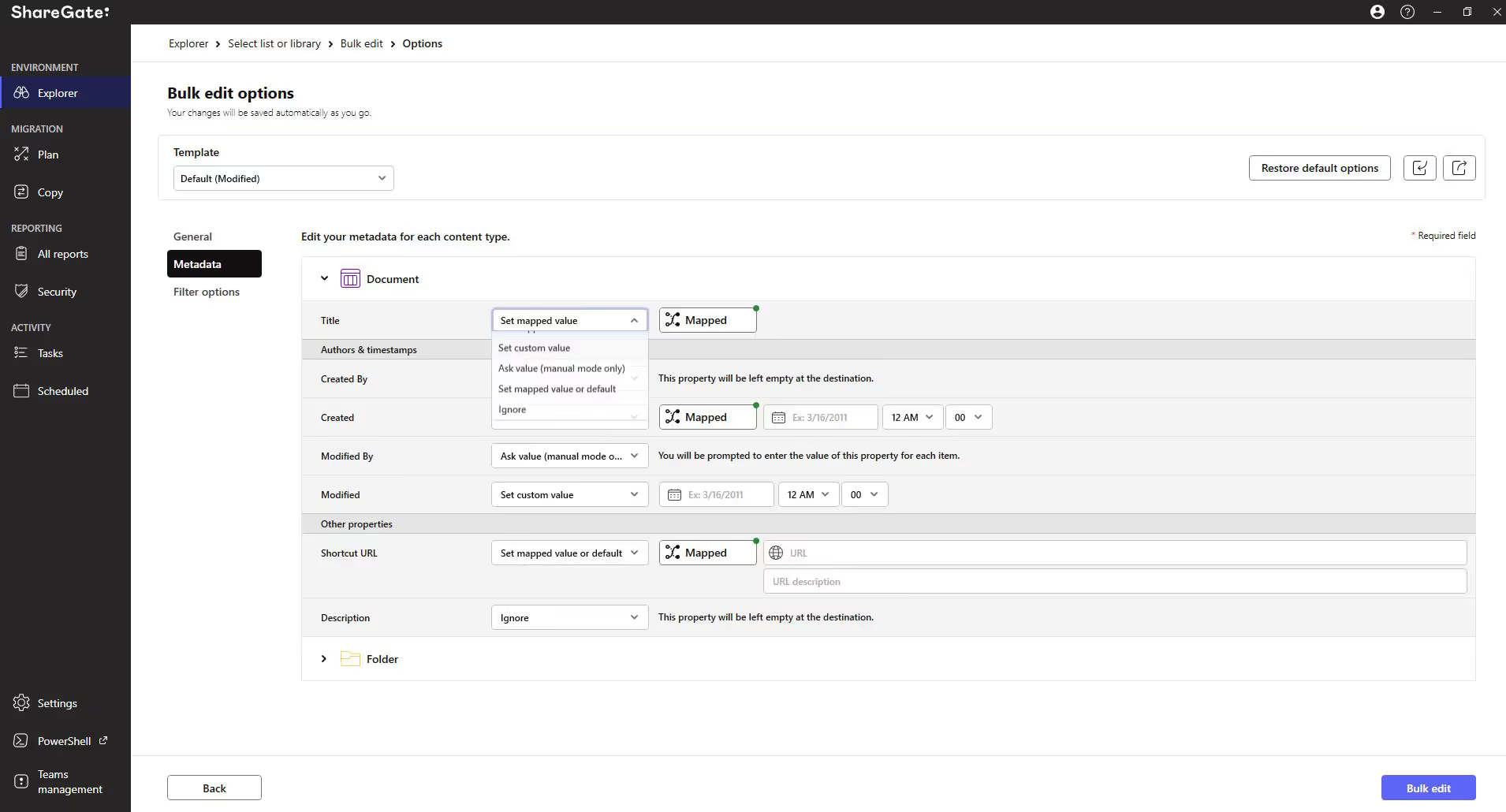
Get instant visibility over your environment
With our built-in and easy-to-use reporting solution for Microsoft 365, it’s easier to see exactly what’s happening in your organization’s IT environment and what needs attention.
For example, running our site and site collection report provides you with a list of all your existing sites and site collections as well as data, including:
- Date created
- Last modified date
- Number of subsites
- Site owners
- Administrators
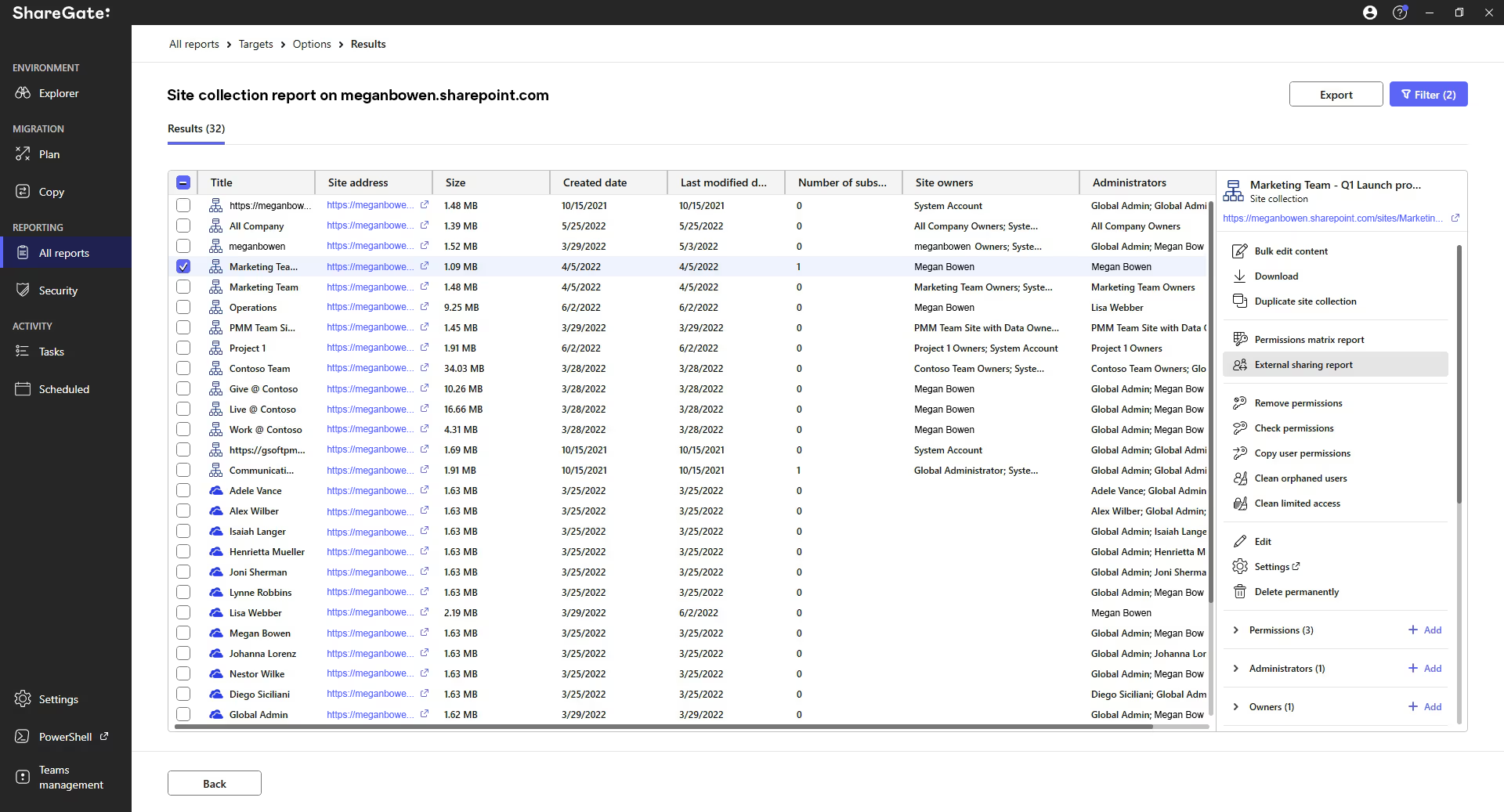
You can modify the report to see missing data. No need to rebuild the report to get exactly what you need.
Once your reports are finished running, you can pinpoint issues and take action on items directly from the reports to fix them fast. Reporting is a great way to anticipate your organization’s needs—now and for the future—and stay on top of your ever-changing environment.
Report for duty: Learn why you should already be using SharePoint usage reports
With ShareGate, you’ve got an extensive, quick-start management solution for transforming Microsoft 365 into the collaborative and secure environment it should be. Start cleaning your tenant in minutes and build your governance strategy focusing on best practices.
We make it easy with simple actions. See for yourself with a free 15-day trial.
.jpg)


.svg)
.avif)
%20(1).avif)












